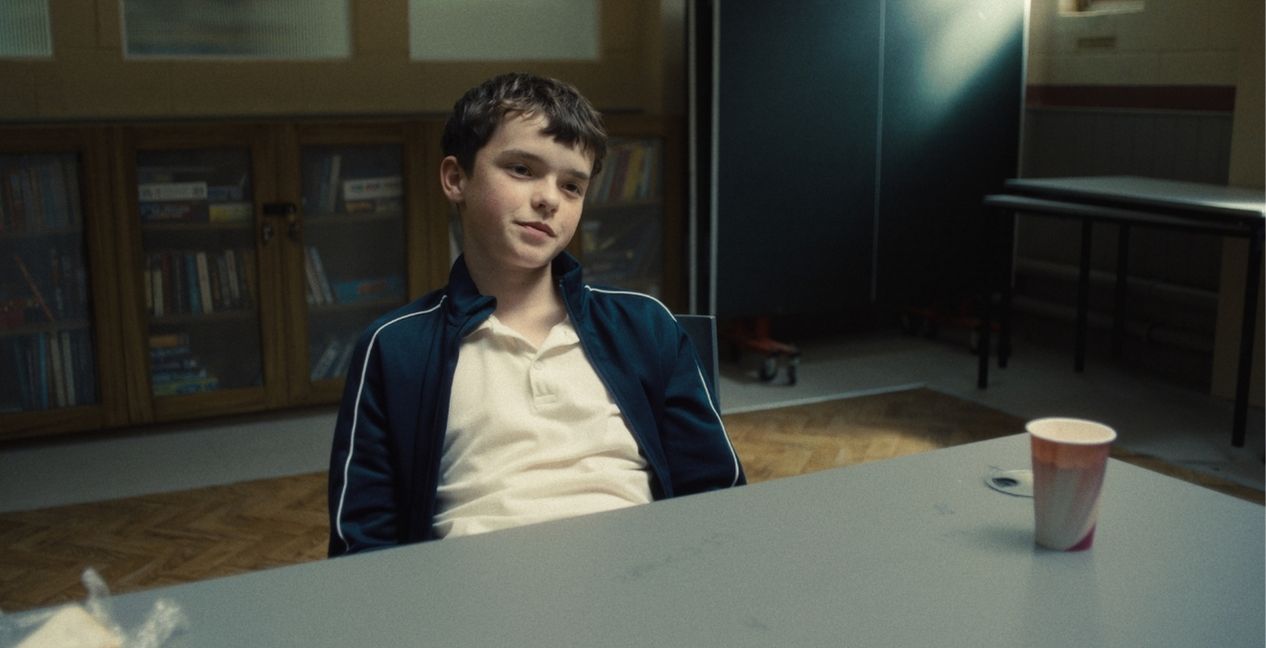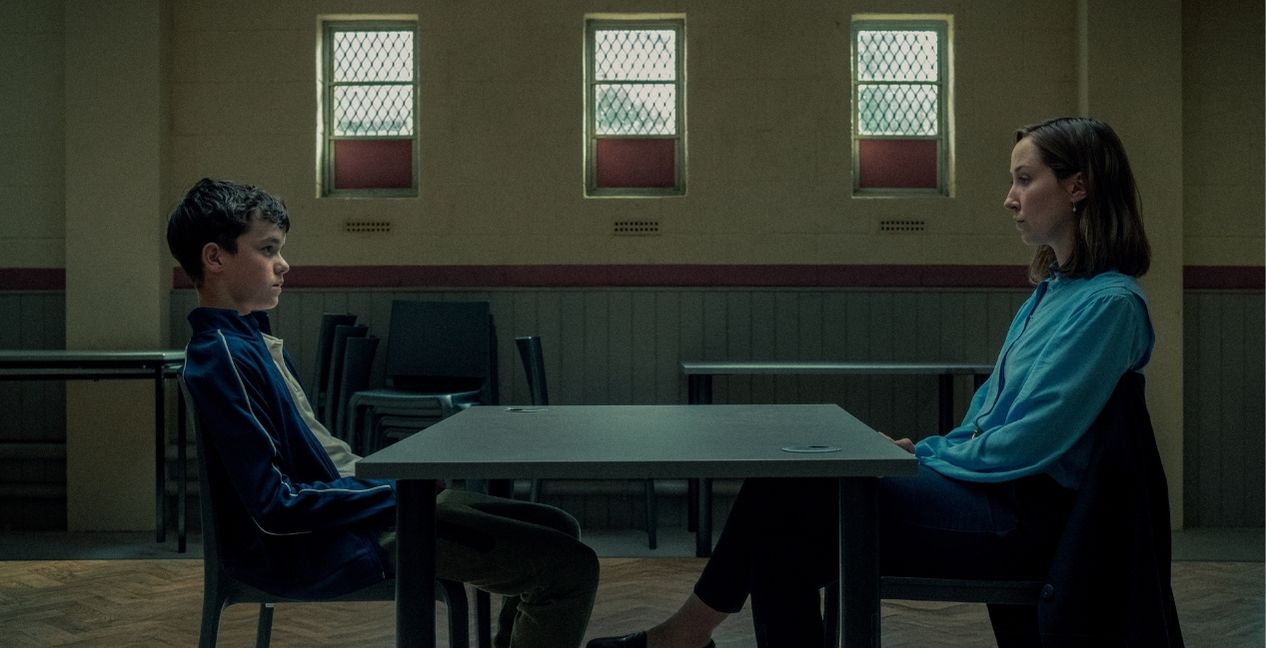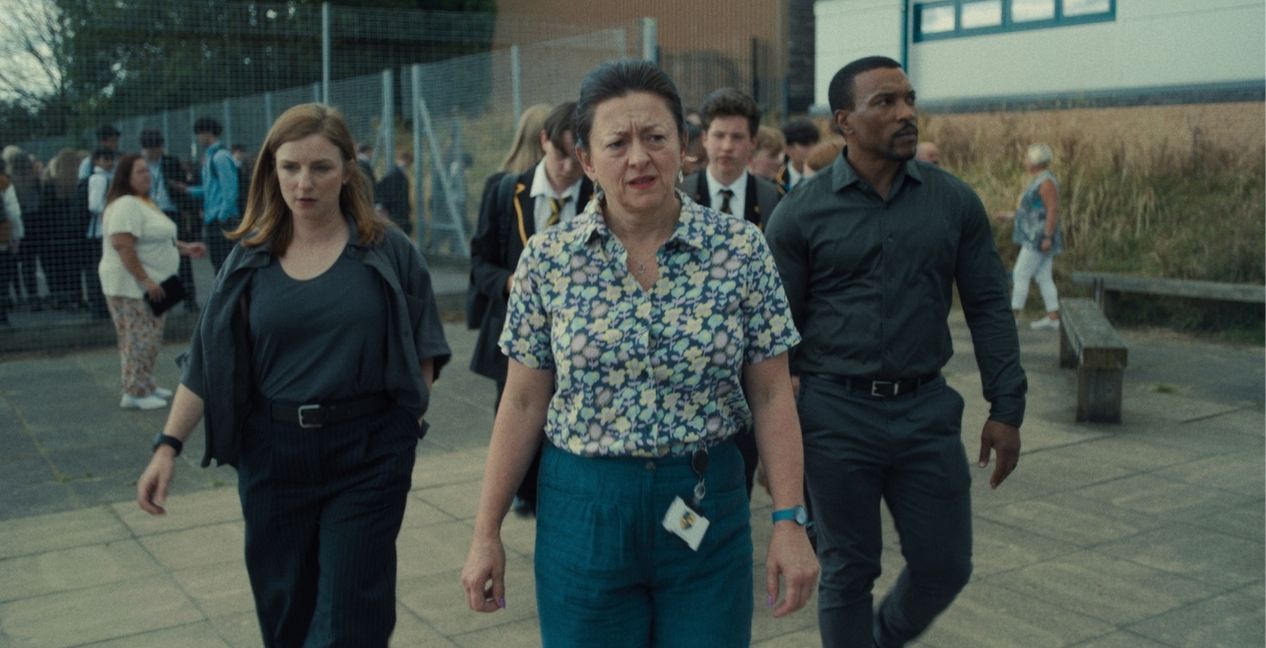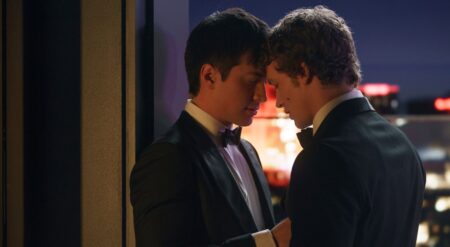Adolescence (2025), directed by Philip Barantini and written by Stephen Graham and Jack Thorne (His Dark Materials), explores the causes and effects of a brutal murder. When 13-year-old Katie is found stabbed to death, her fellow student Jamie (Owen Cooper) is the prime suspect. As the facts and details come to light, the tragedy soon expands beyond those directly involved, threatening to swallow anyone remotely close to it whole.
There are contradictory elements in storytelling that, under most circumstances, inherently detract from each other. A prime example is intimacy and scope. The broader a story’s scope, the less intimate it feels. As it moves between characters and places, it becomes hard to feel fully drawn into a particular character’s story. However, Adolescence (2025) manages to marry the two concepts, expanding its story in the most emotionally intimate way possible.
The series’ willingness to leave characters out of episodes allows Adolescence (2025) to feel far larger in scope than the above cinematic approach. Jamie, the center of the whole affair, is only physically present in two of the four episodes. The freedom to abandon subjects allows the story to expand its reach to a far greater degree than many series with far less restrictive constraints can manage.
Each of the series’ four episodes is done in a single shot. With no cuts to jump from place to place, each episode’s story follows closely to the subjects of that episode, never leaving their sides. In some episodes, the camera gets handed off between interconnected parties. In others, it never leaves a single group or even individual.
The immersive camera of Adolescence (2025) is brilliant.

This permanence of perspective creates a greater sense of presence than most TV and movie experiences. The immersive nature of the camera work magnifies the series’ most uncomfortable and distressing moments, demanding that the characters’ emotions be felt.
The other element of the camera work that is utterly brilliant is what it shows. Due to the inability to cut between characters during back-and-forth conversations and other rapidly changing moments, the camera will settle in on one character, holding them in the frame for long periods. This means that rather than always seeing the speaker’s facial expressions, you instead see the reactions to them. And those reactions can be powerful.
Not only does the camera work do a terrific job of picking what to show, but it never shies away from getting right up close to the subjects it chooses. Moments like a police interrogation become completely claustrophobic. There are times when the closeness creates a feeling of intrusiveness. Like the viewer is witnessing things they shouldn’t be and learning secrets meant to be confidential. This adds to the discomfort of many key scenes, which would be highly upsetting even when presented with the most basic of execution.
The final element that makes all of this fantastic camera work succeed is the skillful portrayals of the subjects it follows. Every character that appears, whether for entire episodes or single scenes, feels like a living, breathing person. Complex emotions play out with powerful deliveries as the series explores the causes and effects of Katie’s tragic death.
Owen Cooper’s performance in Adolescence (2025) is sensational.

All of these elements meld throughout the series but reach their most perfect delivery in the third episode. Shot almost entirely in a single room, this episode focuses on an interview between Jamie and a social worker, Briony Ariston (Erin Doherty), who is there to make sure the youth understands what is and will be happening to him as his trial approaches.
The choice to spend an entire episode on this single conversation allows everything Adolescence (2025) sets out to accomplish to boil over into a powerful and raw demonstration of human emotions. As Briony peels back the layers of Jamie’s feelings and motivations, Cooper delivers one of the best performances I’ve ever seen. How he takes the confused young man from vulnerability to rage to confusion and back is mystifying and powerfully done.
What makes the performance even more powerful is how carefully the writing handles the character’s culpability. Even as the scene explores the elements that drive his upsetting personality, it never seeks to excuse him for his actions. When he wildly lashes out, it is always treated as his choice. While he is recognized as a victim in his own right, his victimhood never feels like an excuse for his heinous attitude.
Adding to the weight of this unforgettable scene is Doherty’s portrayals of her character’s reactions and persistent pursuit of Jamie’s true self. The tension that builds in her throughout the episode as fear and discomfort come to encompass her is equally powerful. In the aftermath of the interview, Doherty manages to project Ariston’s processing of the encounter with the feeling that it has dredged up unrelated events from the character’s past. That unspoken history exists for her, and the anger and danger she was just exposed to have forced it all to the surface once more.
Adolescence (2025) is a triumph of storytelling.

The final triumph of Adolescence (2025)‘s storytelling comes with how many issues it tackles. In exploring the events and circumstances that led to Katie’s murder, the series holds nothing back, allowing all of society to be called into question. Issues of generational trauma, cyber-bullying, schools that are likened to “holding facilities,” and toxic masculinity are all brought out and allowed to be considered as pressure points that drove the events to occur as they did.
This wide-lensed look at the causality behind the crime showcases just how deep and varied society’s problems are. There is no quick fix or single issue that, if solved, would make all right with the world. This honest look at the plethora of issues that impacted the characters and events of the narrative further increases the distressing nature of the story.
Adolescence (2025) delivers a powerful narrative that is both intimate in nature and wide-reaching in scope. Its pervasive camera work resonates every emotion in a uniquely engaging way, allowing the brilliance of its actors and story to shine.
Adolescence (2025) is streaming now on Netflix.
Adolescence (2025)
-
Rating - 9.5/109.5/10
TL;DR
Adolescence (2025) delivers a powerful narrative that is both intimate in nature and wide-reaching in scope. Its pervasive camera work resonates every emotion in a uniquely engaging way, allowing the brilliance of its actors and story to shine.








